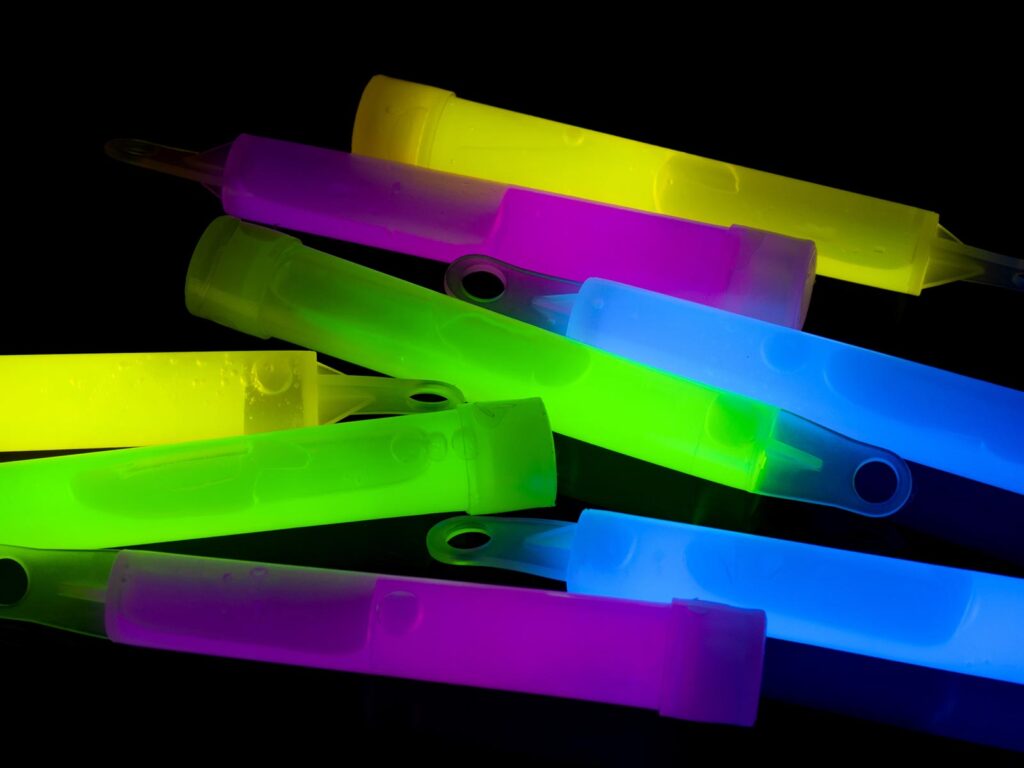
Have you ever wondered how things glow in the dark? It’s like magic! But there’s actually a scientific explanation for it.
There are two main ways that things glow in the dark: phosphorescence and chemiluminescence. Those are big words, let’s learn more about them!
Phosphorescence
Phosphorescence is when something absorbs light and then releases it slowly over time. This is how glow-in-the-dark stickers work. The stickers are coated with a material called phosphor, which absorbs light from the sun or a lamp. When you turn off the light, the phosphor releases the light slowly, making the sticker glow.
You can make your own glow-in-the-dark stars and stickers! You can buy phosphor powder online or at some craft stores. Mix the powder with glue and water and paint it onto any surface you want.
Chemiluminescence
Chemiluminescence is a different way to make something glow in the dark. It happens when two chemicals are mixed together, and they produce a chemical reaction that releases light. This is how glow sticks work. Inside a glow stick, there are two chemicals that are separated by a thin glass tube. When you bend the glow stick, the glass tube breaks, and the two chemicals mix together. This produces a chemical reaction that releases light, making the glow stick glow!
Glow sticks were invented in the 1970s. They were originally used by the military, but now they are popular at parties and other events.
Fun Facts
- The first glow-in-the-dark paint was made in the early 1900s. It was used to paint watch dials so that people could see the time in the dark!
- The longest-lasting glow-in-the-dark material is called strontium aluminate. It can glow for up to 20 years!
- Some animals glow in the dark, like fireflies and jellyfish. They produce light through chemical reactions in their bodies. This is known as bioluminescence.
Learn more about things that glow in the dark:
- Go firefly watching on a warm summer night if you are lucky enough to live in a region where fireflies are found! Fireflies produce their light through chemical reactions in their bodies, This is called bioluminescence.
- Visit a science museum or zoo to see glow-in-the-dark animals and plants. Many museums and zoos have exhibits on bioluminescence.
- Read books about glow-in-the-dark creatures. There are many great books about fireflies, glow-in-the-dark fish, and other bioluminescent animals.
